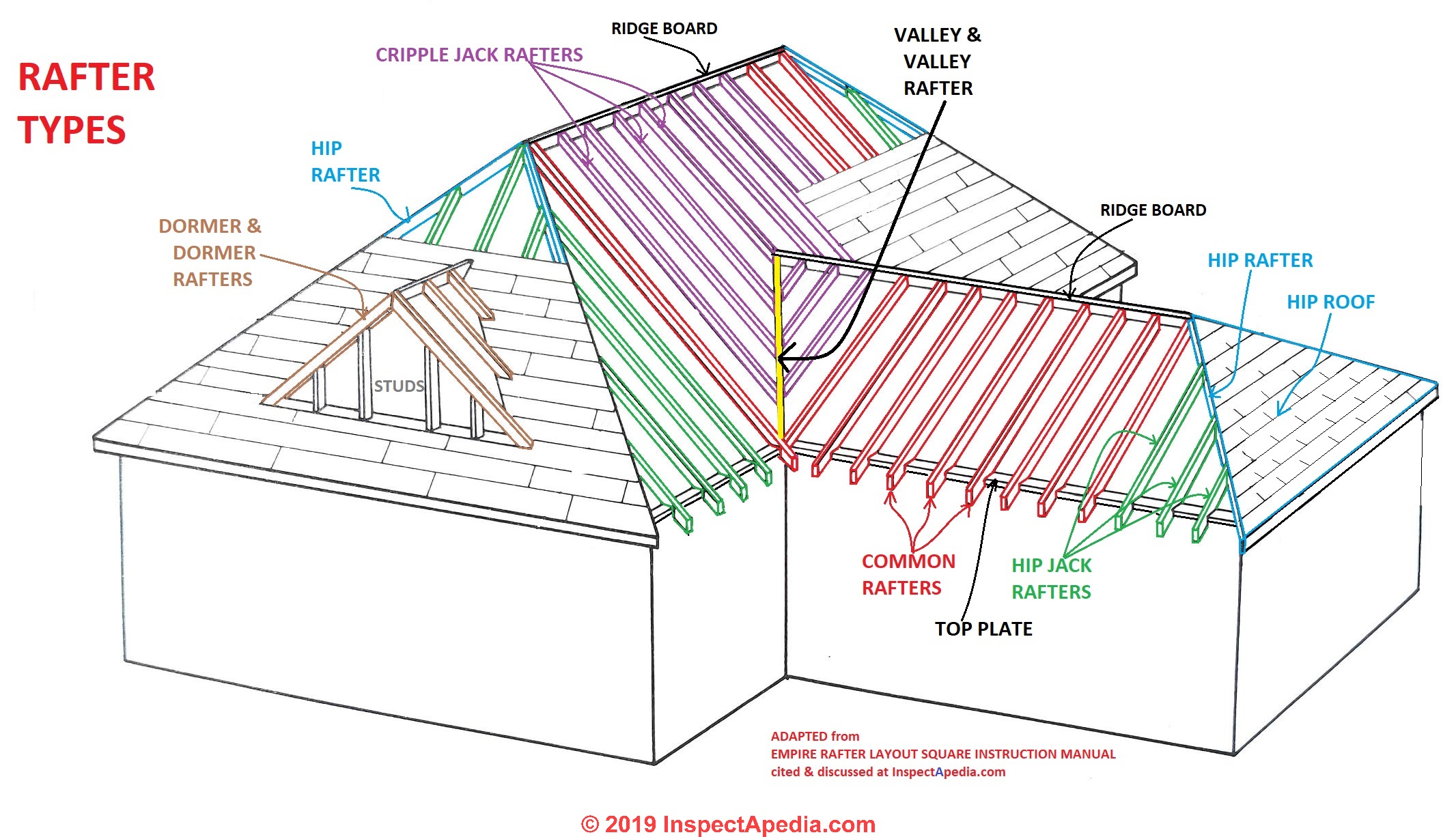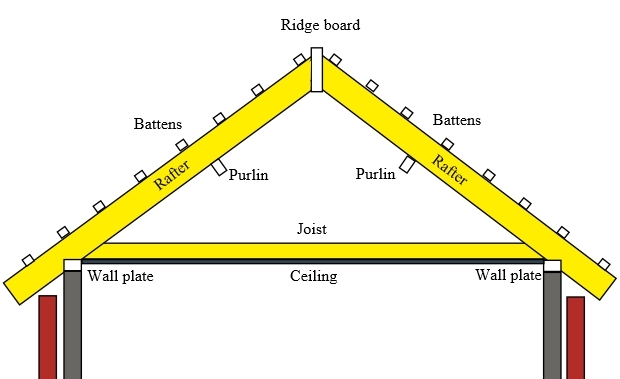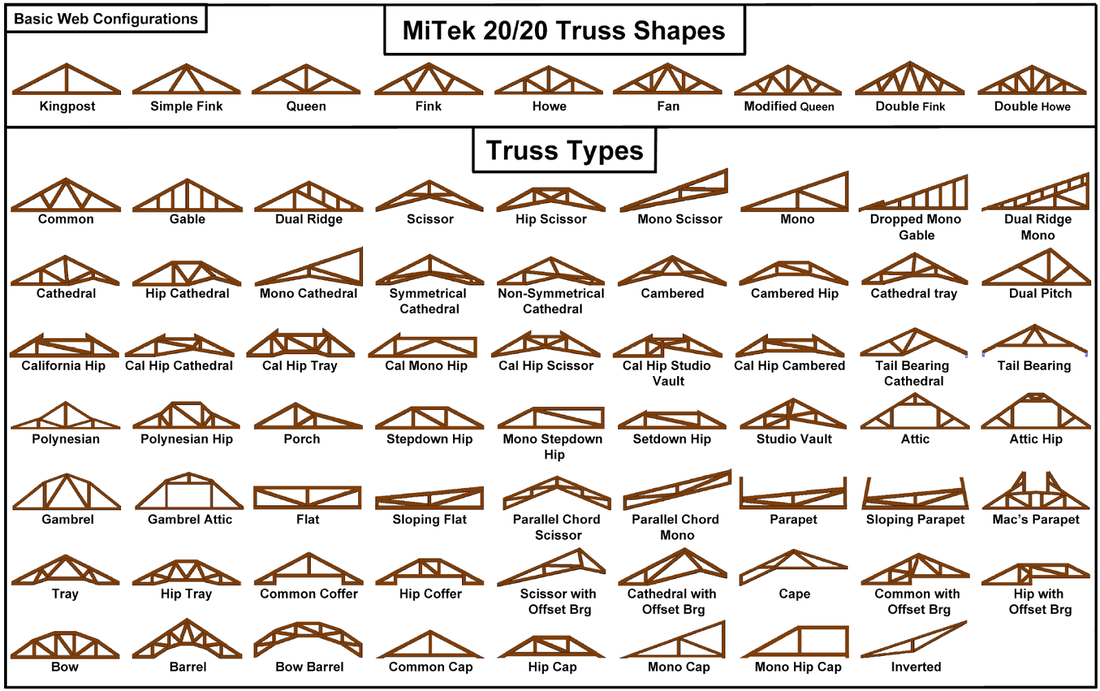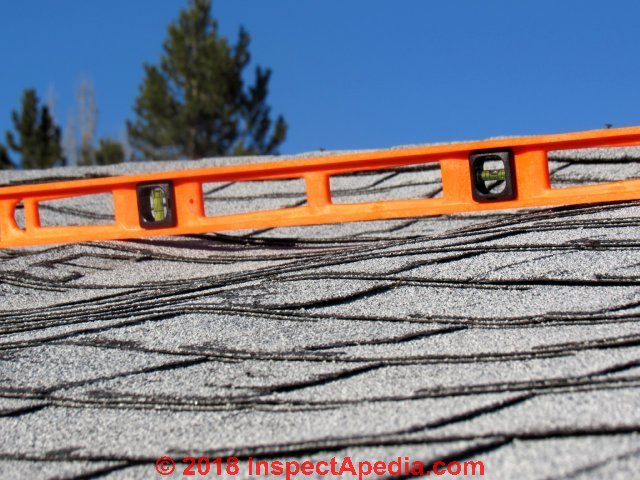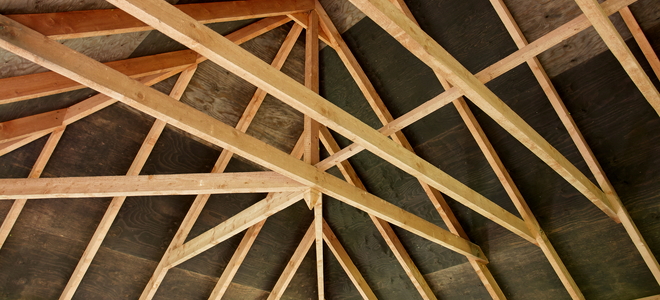A pair of rafters is called a couple in home construction rafters are normally made of wood exposed rafters are a feature of some traditional roof styles.
Rafters and roof ridges are normally under tension.
Mathematicians and engineers discussing collar ties and rafter ties explain that collar ties and rafter ties or ceiling joists under a gable roof are in enormous tension and that the mathematics of the roof forces are the same for collar ties and rafter ties.
A ridge beam carries the loads of the rafters connected to it and must be both strong enough to carry the weight and well supported at the bearing points at each end to transfer the loads down to the ground.
The roof framing mock up below shows a standard rafter tie.
Rafters are typically installed on 24 inch centers.
Rafter tie a tension tie in the lower third of opposing gable rafters that is intended to resist the outward thrust of the rafter under.
That s true for horizontal ties in the lower third of the roof.
If you see sagging rafters recommend stabilization by a qualified contractor.
Collar tie is a colloquial term for collar beam.
If you see rafters installed on centers greater than 24 inches look for signs of failure such as sagging of the rafters.
A ridge board was not always required and the photo above of the attic in a 1920s era house shows a roof framed without one.
A rafter is one of a series of sloped structural members such as wooden beams that extend from the ridge or hip to the wall plate downslope perimeter or eave and that are designed to support the roof deck and its associated loads.
In many situations you ll find that ceiling joists installed parallel to the rafters are intended to function as rafter ties.
